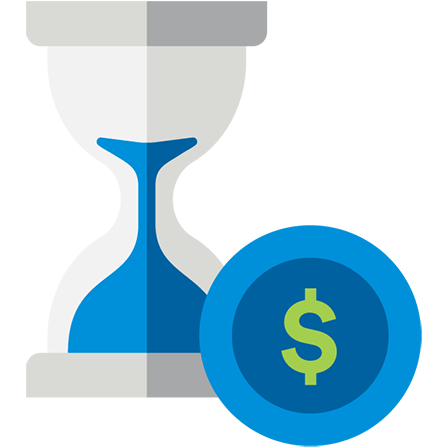Receiving income in retirement
As retirement approaches, it's important to understand the options for receiving your money.
Staying put
One option is to delay taking distributions until you need to access your money. If you’re in a good financial position, you can let your money stay and potentially grow until you’re required to take a distribution at age 73. Investing involves market risk, including possible loss of the money invested.
An RMD, or Required Minimum Distribution, is the minimum amount you must withdraw from your retirement accounts each year after reaching RMD age. Generally, you need to begin taking withdrawals from your retirement plan accounts when you reach one of the following depending on your birthdate:
- Age 70½ — if you were born before July 1, 1949.
- Age 72 — If you were born after June 30, 1949, and before January 1, 1951.
- Age 73 — If you were born after December 31, 1950, and before January 1, 1960.
Taking Income
You have two different ways to receive income:
Withdrawals
You may withdraw a certain portion of your retirement saving within specified limits.1
Annuitization
Converting your retirement saving into regular income payments.
Value Prop Item
Supporting Copy
Withdrawal payment options
Systematic Withdrawal
HintLump Sum
HintPartial Lump Sum
HintYou can receive a fixed dollar amount at the frequency you select (monthly, quarterly, semi-annually or annually) until your account balance reaches zero. You can also choose how long and how frequently you would like to be paid, with payment amounts varying based on the performance of your investments. You can continue to manage and change your investment options while receiving systematic withdrawals.
You receive the entire balance of your account in one payment. Unless the money is rolled over into another qualifying plan within 60 days of receipt, it will be taxed based on your tax bracket.
You can take part of your account balance as a lump sum and leave the remainder in your account. Your money can stay in your account, regardless of your employment status.
Annuitization
When the time is right, you can choose a portion (or all) of your retirement savings to convert into a steady stream of retirement checks. This is called the annuitization phase.
You can choose how you want to receive income payments from your retirement plan account. Income stream options include choosing to receive payments for a set number of years (fixed period) or for the duration of your life (lifetime annuity). The amount of the payments depends on several factors, including the size of the retirement plan account, the payout period (fixed or lifetime), prevailing interest rates, and tax implications.
Get the help you need
You can log into your account to request a quote or a required minimum distribution (RMD). Because plan withdrawals involve tax issues, you should consult your qualified legal, tax and accounting advisors before making decisions.


